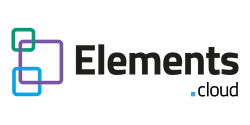LEARNING OBJECTIVES
After completing this unit, you’ll be able to:
- Engage senior executives and get their support
- Esure user adoption is included the overall project plans
EXECUTIVE ALIGNMENT
Senior exec engagement is important throughout any major project. From a user adoption perspective you particularly need support at the following points:
- Planning and budgeting. Make sure that user adoption is recognized as an important activity throughout the project and not just training at the end.
- Process mapping workshops. Their support will ensure that the correct people attend the workshops to redesign the business processes
- Agreement of the metrics. People act as they are measured, so getting the correct metrics that drive and reinforce behavior is vital. Senior execs focus more on the numbers than the process.
- Protecting the training budget. Often training budgets are cut when there are project cost overruns. This is a false economy.
- Enforcing the metrics and rules. Post-implementation you will need support to make sure the adoption is sticking. There may have been guiding principles such as “If it isn’t in Salesforce, it doesn’t exist” or “Commission is only paid on closed Opportunities in Salesforce“. Threats only work if they are enforced – ask any parent of a toddler.
The Trailhead User Adoption Strategies unit called Prepare to Build Your Salesforce Journey has a section on getting senior exec alignment. It is copied below, in italics.
Secure Executive Alignment
Having your executives’ support will be crucial down the line, so the earlier you can get them on board with your plans, the better.
Generally, your company is looking to get something specific out of Salesforce. And there’s likely several departments and stakeholders involved—all with different ideas of what the goal is. Take some time to learn what each stakeholder is hoping to get out of Salesforce. Determine what you can deliver, and discuss that frankly to set expectations from the start. And for your part, be sure that you commit to building a Salesforce experience that will meet the needs of each stakeholder. A big part of adoption is building trust with these stakeholders, and delivering on your promise is a surefire way to seal that trust.
Now here’s the really important part: Once you have the execs excited about what’s to come, ask them to support your new Salesforce implementation. Their commitment will look different for different companies, but here are some examples of things to ask your execs.
- Require that their sales reps log in to Salesforce a certain number of days per month. (Some Salesforce customers have used this metric to reward reps.)
- Participate in launch emails or videos, showing their support and expectation that the reps will use Salesforce.
- Only use Salesforce for forecasting and pipeline, and require that the entire sales team do the same thing.
- Enforce a rule that reps can only be paid commission on deals that are entered in Salesforce.
If you can secure this type of support early on, you’re well on your way to making Salesforce your company’s go-to system. Then watch as adoption soars.
ADDING USER ADOPTION INTO PLANS
User adoption is more than just training users after Salesforce goes live. Looking at each phase of the project, here is where user adoption fits in:
Business design. It starts when you first engage the end users to understand how Salesforce can improve and streamline their business processes. This is where you would map their business processes in live workshops. The way to drive up user adoption is to make sure that you are building what the users really need to make their jobs easier. And you need to establish the metrics that will reinforce the new operational processes.
Build and test. Those process diagrams you created in the the previous phase can be used for UAT (User Acceptance Testing). This ensures that the delivered customizations support the required business processes. If they don’t, user adoption tanks.
Roll-out and train users. This is where most focus for user adoption is aimed. It’s about planning the roll-out and communications approach, then delivering user training. You can be creative with different formats and point of need, self-paced training rather than more traditional instructor-led training. Start measuring adoption immediately. There is a great Trailhead module on planning training and communication called User Training and Motivation
Post implementation review and feedback. You won’t get it 100% right. But having a really slick feedback mechanism that shows you are responsive will keep your users on side. Some problems can be fixed by tweaking the help – instantly – or by changes to the operational processes. Others may require changes to the configuration, so the design-build-test-train process for small changes needs to be thought through ahead of time.
We will look at each of these phases in the next modules of this training and provide you with simple, easy, and practical approaches to delivering user adoption at scale.
=======================================================================
NEXT Engaging users and understanding their business processes and needs
